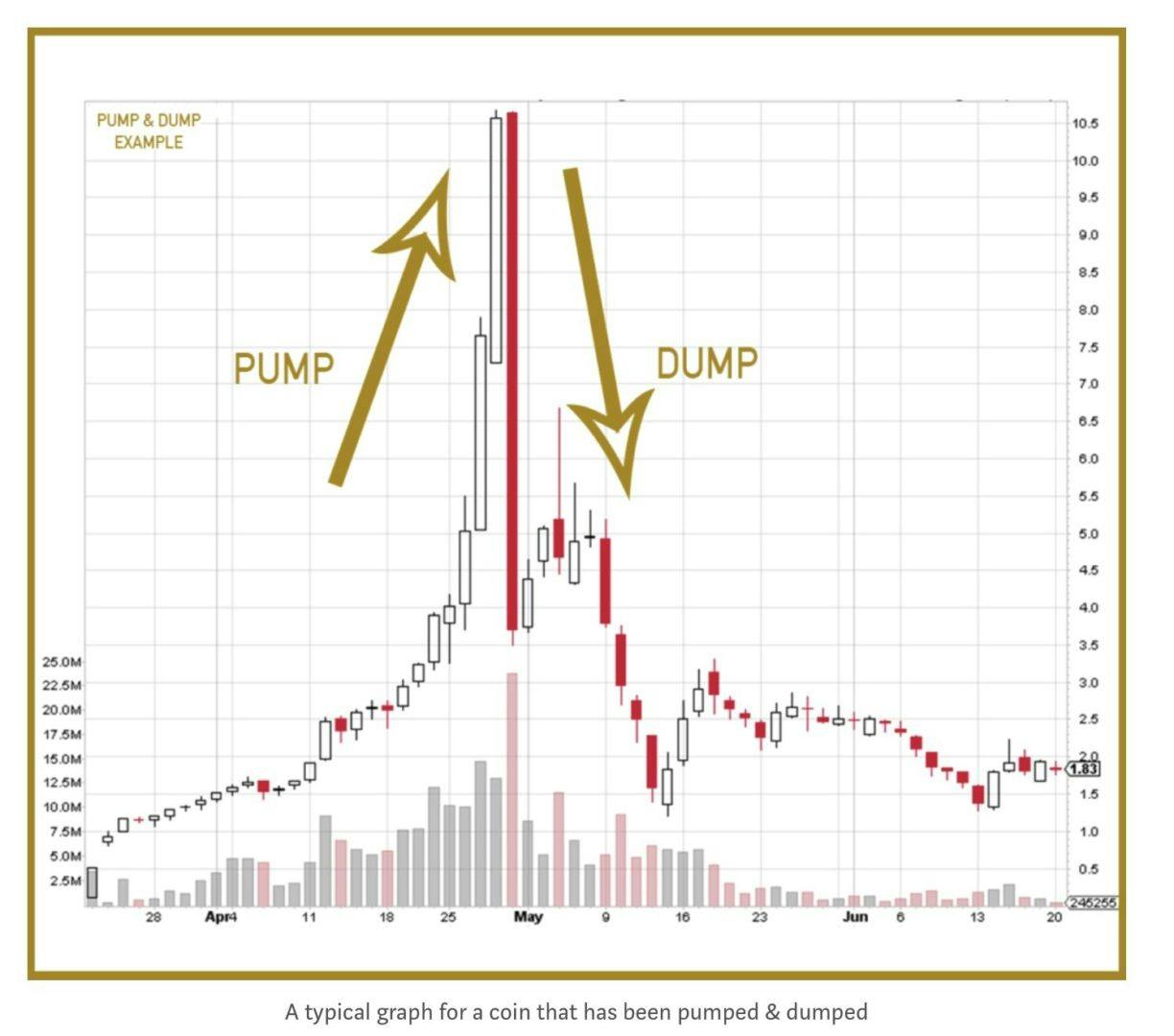
- All
- Tools
- Analytics
- Technical Analysis
- Trading
- Blockchain
- DeFi
- Guides
- Company News
- Educational
- Opinion
- Price Predictions
- Market News
- News
- Trading cases
- Practical guides
- Exchanges
- Trading signals
- Cryptocurrency
- Crypto bots
- Other
Become a crypto master
Learn everything about crypto,
trading and bots

A Detailed Guide to Successful Trading Using the Butterfly Option Strategy in 2025
- What is a Butterfly Trading Strategy in 2024?
- Components of a Butterfly Option Strategy
- What Is a Butterfly Spread?
- Payoff Diagram and Risk-Reward Profile of a Butterfly Spread
- How to Implement the Butterfly Option Strategy
- Advantages and Limitations of Butterfly Option Strategy
- Conclusion
- 2025 Market Update: Revisiting A Detailed Guide to Successful Trading Using the Butterfly Option Strategy in 2024
Start Trading on 3Commas Today
Get full access to all 3Commas trading tools with free trial period

Butterfly options trading is a sophisticated and versatile trading strategy that provides traders with a unique opportunity to profit from market movements while managing risk. This article provides a comprehensive overview of the butterfly option strategy, explaining its benefits, and the different types of butterfly spread.
Options trading offers traders different strategies that they can use to profit from market movements and achieve their trading goals. One such method (which has become popular among experienced traders) is the butterfly options trading strategy.
The butterfly option strategy is a neutral options strategy that involves simultaneously buying and selling many options contracts with different strike prices. Its name comes from its visual representation on a graph, which resembles the wings of a butterfly. The strategy is usually used by traders that believe that the price of the underlying asset will remain within a certain range.
This article explores the concept of butterfly option strategy, including how it works, and its advantages and limitations.
What is a Butterfly Trading Strategy in 2024?
Options are financial derivatives that provide the holder with the right (but not the obligation) to buy or sell an underlying asset at a given price (the strike price) within a set time frame (the expiration date).
Options are classified into two types: call options, which allow the holder to buy the underlying asset, and put options, which allow the holder to sell it.
The butterfly option strategy involves combining different options contracts to create a position with a unique risk-reward profile. When trading butterfly options, three strike prices are used; a lower strike price, a middle strike price, and a higher strike price. The trader buys and sells options contracts at these strike prices to form the butterfly spread.
Components of a Butterfly Option Strategy
The three main components of butterfly option strategy are:
- Buying two options at a lower strike price
- Selling two options at a medium strike price, and
- Buying one option at a higher strike price
This setup creates a symmetrical profit and loss diagram that resembles the wings of a butterfly, hence the name.
Long Call Butterfly
This involves buying one lower strike call option, selling two middle strike call options, and buying one higher strike call option. This strategy is usually used when the trader believes that the price of the underlying asset will remain near the middle strike price.
Long Put Butterfly
This is the opposite of a long-call butterfly. This strategy involves purchasing one lower strike put option, selling two middle strike put options, and purchasing one higher strike put option. Traders use this strategy when they feel the price of the underlying asset will stay close to the middle strike price.
What Is a Butterfly Spread?
A butterfly spread is an options trading strategy that involves combining many options contracts to create a position with a specific risk-reward profile. When executing a butterfly spread, a trader usually buys and sells options contracts with different strike prices and the same expiration date. The approach combines long and short positions to create a balanced trade. Traders can benefit from a specified range of prices at expiration by properly choosing the strike prices.
Butterfly spreads can be used in different market settings to achieve different goals. Traders may use butterfly spreads when they predict the underlying asset's price will remain within a specified range until expiration. It is a strategy that is typically used when a trader anticipates limited price movement or a period of low volatility.
Types of Butterfly Spreads
There are different types of butterfly spreads, each with its features and potential applications. Here are some of the types of butterfly spreads:
Long Call Butterfly Spread
This is created by buying one at-the-money (ATM) call option, selling two out-of-the-money (OTM) call options, and buying one further out-of-the-money (FOTM) call option. This strategy is usually used when the trader believes that the price of the underlying asset will remain near the ATM strike price until expiration. The maximum profit is earned if the price settles at the ATM strike at expiration.
Short Call Butterfly Spread
This involves selling one ATM call option, buying two OTM call options, and selling one FOTM call option. This strategy is used when a trader feels that the price of the underlying asset will remain relatively stable and close to the ATM strike until expiration. The maximum profit is earned if the price closes below the lowest strike or above the highest strike at expiration.
Long Put Butterfly Spread
This form of options spread involves buying one ATM put option, selling two OTM put options, and buying one FOTM put option. It is used by traders that believe the price of the underlying asset will remain close to the ATM strike until expiration. The maximum profit is achieved if the price settles at the ATM strike at expiration.
Short Put Butterfly Spread
It involves selling one ATM put option, buying two OTM put options, and selling one FOTM put option. The strategy is used by traders that assume the price of the underlying asset will remain stable and close to the ATM strike until expiration. The maximum profit is obtained if the price closes above the highest strike or below the lowest strike at expiration.
Iron Butterfly Spread
This strategy combines a short call butterfly and a short put butterfly. It involves simultaneously selling an ATM call option, buying two OTM call options, selling an ATM put option, and buying two OTM put options. This strategy is used when the trader believes that the price of the underlying asset will remain within a specific range until expiration. The maximum profit is earned in this strategy if the price settles precisely at the ATM strike at expiration.
Reverse Iron Butterfly Spread
This is the opposite of the iron butterfly spread. In this strategy, a trader simultaneously buys an ATM call option, sells two OTM call options, buys an ATM put option, and sells two OTM put options. It is used when traders anticipate that the price of the underlying asset will experience significant price movement and settle outside the range defined by the strikes at expiration.
The maximum profit is achieved if the price settles below the lowest put strike or above the highest call strike at expiration.
Payoff Diagram and Risk-Reward Profile of a Butterfly Spread
Traders use a payoff diagram to predict how a butterfly spread will perform. The diagram depicts the profit or loss upon expiration for different potential underlying asset prices.
The best time to sell a long call butterfly is when the price of the underlying asset is equal to the middle strike price at expiration. Profits are reduced when the price moves away from the middle strike in either direction. The maximum loss is limited to the initial cost of setting up the strategy.
A long put butterfly's risk-reward profile is similar to that of a call butterfly, but its main focus is on put options (not call options).
How to Implement the Butterfly Option Strategy
Choose the Appropriate Market Conditions for Butterfly Options
The current market conditions must be considered when using the butterfly options. The strategy works best in markets that are range-bound or have low volatility. In these cases, the price of the underlying asset often remains within a specific range and is usually stable.
Traders usually look for markets or stocks that have had a period of consolidation or sideways movement. This indicates a lack of strong positive or negative sentiment and increases the likelihood that the price will remain within a particular range.
Identify the Optimal Strike Prices and Expiration Dates
To execute a butterfly option strategy, the relevant strike prices and expiration dates for the related options contracts must be selected. The strike prices should be determined using the projected range of the price movement of the underlying asset.
Butterfly spread usually involves buying or selling options contracts with three different strike prices. The options at the outer strike prices are bought or sold once, as opposed to the options at the middle strike price, which are bought or sold twice. As a result, a symmetric pay-off structure is formed.
The expiration dates should be consistent to match the trader's expectations for the duration of the range-bound or low-volatility period. Selecting expiration dates that are too close together may not allow enough time for the projected price range to emerge.
On the other hand, choosing expiration dates that are too far may result in capital being held in reserve for an extended period without maximizing potential rewards.
Calculate the Cost and Potential Profit of a Butterfly Spread
The cost of the spread is the net premium received or paid when the position is opened. A butterfly spread has a limited potential profit and occurs when the price of the underlying asset at expiration is equal to the central strike price. The profitability will be affected if there is any deviation from this central strike price.
Hence, it is important to consider the risk-reward profile and assess whether the potential profit justifies the strategy's cost and risk.
Consider Risk Management and Position Sizing
Risk management is important when using the butterfly option strategy as it is with any other options trading approach. Hence, traders must determine their maximum acceptable loss and must also set appropriate stop-loss orders or exit strategies.
Another factor that must be considered is position size. It involves specifying the number of options contracts to trade (which is determined by the account size, trader's risk appetite, and portfolio diversification). The right position sizing protects the trader’s portfolio from being negatively impacted by a single trade.
Furthermore, it is important to regularly monitor the position and make changes as needed if market conditions change. You may need to close or roll the spread if the price of the underlying asset moves outside of the projected range or if volatility increases.
Advantages and Limitations of Butterfly Option Strategy
Advantages
It is important to understand the advantages of butterfly option strategy as it can help investors assess whether the strategy suits their trading goals. Here are some important advantages of the strategy:
Limited Risk
When generating a butterfly spread, the maximum loss is limited to the position's start-up fees. This makes butterfly option strategy a useful trading style for conservative investors who wish to define and manage their downside risk.
Controlled Profit Potential
Butterfly option strategy offers predefined profit potential. The maximum profit is achieved when the price of the underlying asset settles at the strike price at expiration. Before entering a trade, traders can assess and evaluate their potential profit, allowing them to make well-informed decisions based on their profit objectives.
Reduced Capital Outlay
Butterfly option strategy requires less initial capital than other complex options strategies. Traders can create a butterfly spread at a substantially lower cost by combining long and short options contracts. Butterfly options are accessible to a broader range of traders with varying levels of capital due to their low cost.
Benefit from Time Decay
Butterfly options trading strategy can make use of theta decay, also known as temporal decay. The value of the options in the strategy depreciates over time. This decay can be favorable for traders who establish a butterfly spread, especially if the price of the underlying asset remains inside a specified range.
In a nutshell, time decay may help generate potential profits for traders that use butterfly option strategy.
Versatility and Flexibility
Butterfly trading strategy can be customized to different trading strategies and market conditions. Traders can modify the strike prices and expiration dates to reflect their expectations for the price movement of the underlying asset.
Due to the versatility of the butterfly option strategy, it allows traders to profit in different market conditions, including when the underlying asset's price movement is limited or when the market is consolidating.
Limitations and Potential Risks
Traders should be aware of the limitations and potential risks of trading butterfly option strategy to make informed decisions and properly manage their risk. Here are some limitations and potential risks associated with trading butterfly options:
Limited Profit Potential
Although butterfly trading strategy offers controlled profit potential, they also have limited maximum profit. The profitability of the strategy is limited if the price of the underlying asset at the expiration is not at the strike price of the options. If the price moves beyond the expected range, the profit potential may be limited, and the trade may end in a loss.
Sensitivity to Price Movement
Butterfly option strategy is profitable when the price of the underlying asset remains within a particular range. The strategy’s profitability decreases if the price moves too far away from the range that the strike prices defined. Butterfly trading strategy may not be the best investment during times of significant market volatility since they are sensitive to price movements.
Time Decay Working Against the Position
If the price of the underlying asset remains steady or moves slowly, the effect of time decay may not be sufficient to create significant profits. It is important to properly evaluate how time decay impacts the position to ensure that it produces the desired result.
Conclusion
The butterfly option strategy offers traders a versatile way to trade options. Traders that use butterfly spreads can profit from specific market conditions and generate consistent profits. The risk-to-reward profile of the strategy (as depicted in the payoff diagram) helps traders to have a clear visualization of potential outcomes.
As with any trading strategy, it is advisable to seek professional advice and conduct in-depth research before using the butterfly option strategy. Traders must also invest in continuous education due to the ever-changing nature of the options market.
2025 Market Update: Revisiting A Detailed Guide to Successful Trading Using the Butterfly Option Strategy in 2024
In A Detailed Guide to Successful Trading Using the Butterfly Option Strategy in 2024, re-evaluating this options strategy in light of 2025 market conditions is essential for serious traders and financial professionals. While the foundational approach to butterfly spreads remains valid, today's crypto markets introduce new variables that institutional investors, asset managers, and high-level traders must account for when constructing or adjusting positions.
Changes in Market Behavior
Digital asset markets in 2025 are showing a more muted volatility profile compared to prior bull cycles. After the pronounced run-ups of late 2024, many cryptocurrencies—such as Bitcoin and Ethereum—have entered consolidation. During Q1 2025, Bitcoin is down more than 20% from its recent high, signaling broad macroeconomic hesitation and reduced speculative momentum. Under such conditions, the butterfly option strategy becomes particularly relevant for those anticipating restrained price movements within specific time frames.
Strategic Relevance of the Butterfly Spread in 2025
In neutral or range-bound market environments, the butterfly spread remains a cost-efficient, risk-defined structure with strong strategic utility.
- Reduced Forward-Looking Volatility: Current option premiums reflect lower expected volatility, increasing the relative efficiency of butterfly positions.
- Regulatory Clarity: Growing transparency in global digital asset regulations has encouraged broader institutional adoption of structured option strategies like the butterfly.
- Derivatives Maturity: Execution quality has improved, with deeper liquidity and narrower bid-ask spreads across major options markets—benefiting multi-leg approaches.
Professionals revisiting A Detailed Guide to Successful Trading Using the Butterfly Option Strategy in 2024 can potentially refine their strategies with the following 2025-specific insights.
Tactical Adjustments for 2025
- Strike Placement: Focus on aligning the central strike with technical indicators such as moving averages or recent support levels, rather than round figures. Leverage custom signals from TradingView or other 3rd party market intelligence and strategy-planning software.
- Time Horizon: Time spreads to coincide with macroeconomic event cycles, regulatory announcements, or token unlocks that could impact volatility.
- Execution Tools: Software providers like 3Commas offer analytics, scenario testing, and risk modeling that support disciplined, systematic execution for options strategies.
Risk Management in a Shifting Market
Although the butterfly spread limits maximum loss by design, rapid dislocations or unexpected volatility spikes can erode position value. Active monitoring of delta exposure and volatility skew is necessary. Adjustments such as rolling strikes or transitioning to iron butterflies may be appropriate as market conditions warrant.
FAQ
The butterfly option strategy is a good options strategy that offers low risk and the potential for high reward-to-risk ratios. It provides versatility and is designed to profit from range-bound markets by using both call and put options.
However, it has significant limitations, such as a low-profit potential and sensitivity to changes in time and volatility. The strike prices and expiration dates must be carefully set for effective execution.
Traders that use the butterfly option strategy may profit from range-bound markets. Traders can profit by selling options contracts with higher strike prices and buying options contracts with lower strike prices. The maximum profit is obtained when the price of the underlying asset settles at the middle strike price at expiration. Traders can limit volatility and potentially profit from its decrease by adjusting their positions.
However, keep in mind that market conditions, timing, and liquidity can all have an impact on the profitability of the strategy, thereby requiring ongoing monitoring and good risk management.
The state of the market, the value of the underlying asset, and the trader's skill all affect how profitable an option strategy is. No single strategy consistently outperforms the others. Different strategies perform better under specific market conditions. Traders should conduct research, practice, and seek advice to establish an effective strategy and respond to changing market conditions for maximum profitability.
The iron butterfly option strategy combines bullish and bearish positions to achieve a neutral stance on the underlying asset. It allows traders to profit by selling option premiums in markets with low volatility or when volatility is expected to fall.
However, its profitability is limited to a specific price range, and significant price fluctuations above the breakeven points may result in losses. Before implementing the strategy, traders must understand its risks and how it works, and must also align it with their trading goals.

Adedamola is a highly resourceful content writer with comprehensive experience in researching and creating simple content that engage and educate the audience. He is interested in improving the marketing results of blockchain and crypto brands through great content.
READ MORE
- What is a Butterfly Trading Strategy in 2024?
- Components of a Butterfly Option Strategy
- What Is a Butterfly Spread?
- Payoff Diagram and Risk-Reward Profile of a Butterfly Spread
- How to Implement the Butterfly Option Strategy
- Advantages and Limitations of Butterfly Option Strategy
- Conclusion
- 2025 Market Update: Revisiting A Detailed Guide to Successful Trading Using the Butterfly Option Strategy in 2024





